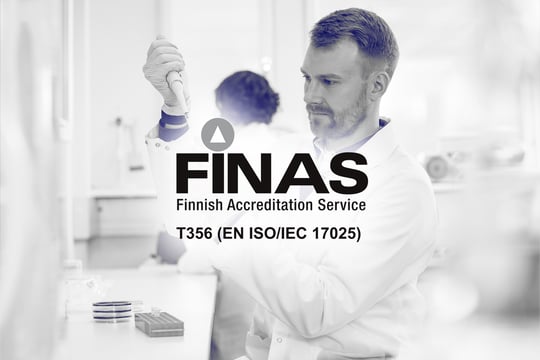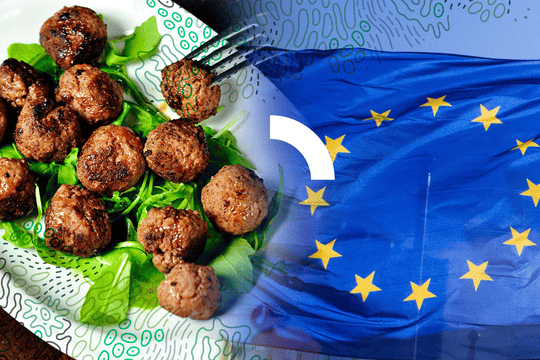
At Biosafe, we work with companies of all sizes — startups, scaleups, and multinationals — supporting their regulatory strategies for bringing microbial food and feed products to market. Our approach combines scientific expertise with tailored laboratory services and deep knowledge of EU and international frameworks.
Our regulatory experts have compiled some of the most frequently asked questions companies around the world are pondering. This same information was presented in a Biosafe webinar in May 2025. The full webinar can be replayed here: The Dos and Don’ts in the Development of Novel Microbial Products
This article focuses mainly on microbial products, including:
-
Live micro-organisms
-
Biomass (non-viable cells)
-
Fermentation products, such as enzymes, proteins, fats, oils, carbohydrates, vitamins, amino acids, etc.
-
Production organisms including bacteria, yeasts, fungi, or microalgae
What are the manufacturing facility requirements, and is GMP required?
In the EU, Regulation (EC) No 852/2004 on the hygiene of foodstuffs does not explicitly require Good Manufacturing Practice (GMP). However, it does require following good hygiene practices. National guides (published by national authorities) have been developed for different food business sectors. For example, the Swedish National Food Agency provides Industry Guidelines for Breweries.
In the United States, GMP is mandatory for dietary and food supplements.
In general, following GMP principles is advisable. It is a good way to ensure compliance with various food production regulations. Additionally, Hazard Analysis and Critical Control Point (HACCP) principles must always be followed.
What kind of sample material is required for regulatory purposes? What scale is required?
The keyword is representative. The individual batches must reflect the final product and production process. This means that all raw materials, processing aids, equipment, and downstream processing (DSP) must be of the same or equivalent quality as those used at industrial scale.
This also means that your production doesn’t have to be at industrial scale, as long as it is representative. Usually, pilot-scale production is sufficient, as it includes all the main elements involved in industrial-scale production.
There are many companies offering services for scaling up and outsourcing production, who can help companies take the next step in production.
In what detail should the manufacturing method be described?
EFSA requires a detailed description of the manufacturing process. For example, the authority focuses extensively on the raw materials used. You must provide:
- A specific list of raw materials and reagents, including their function, chemical identity CAS number, or other identifiers
- Justification for the use of enzymes, their fate and activity in the final product, and their EFSA Q-number if previously evaluated
- A description of the downstream processing (DSP) according to food industry standards
- Identification of critical control points and relevant limits
We strongly advise reviewing the following EFSA webinars related to this topic:
What are the requirements for regulatory batches?
The specifications and limits for the final product must be met, as mentioned earlier. The applicant must use validated analytical methods for each parameter. Depending on the study, you’ll need either 3 or 5 independent batches. Technically, this means you should have 5 batches ready before initiating the application process.
This applies to the EU. In the US, the term "non-consecutive batches" is used, but the principle remains the same: the data must reflect consistent production outcomes.
Is there a list of accepted genetic modifications?
No. There is no such list, and there likely never will be. Modifications are assessed case by case. We advise avoiding the use of antibiotic resistance markers in the final production strain. Their use is acceptable during strain development, but it is recommended to remove them before production.
However, if the final product does not contain DNA, it can still be authorised even if the production strain contains a marker.
In short, if any genomic editing techniques are used in the production strain, it will be considered genetically modified in the EU. Genetically modified microorganisms are widely used for producing fermentation products, but the final product should not contain viable cells or DNA from the production organism.
Should WGS data be submitted or not?
This is a hot topic. In its 2024 statement, EFSA recommended that raw and processed WGS data should be submitted with the application. While this is not legally binding, applicants are expected to provide justification if data is withheld.
WGS data is always considered company-confidential proprietary information and it should remain strictly confidential. OpenEFSA shows several examples of successful risk assessment submissions without WGS data.
What changes to the manufacturing process must be notified to EFSA?
Examples of significant changes (as presented in EFSA’s 2025 webinar) include:
- Switching from an extraction-based to a fermentation-based method
- Replacing a conventional strain with a GM strain
- Using an enzyme derived from a new strain
- Introducing a new enzyme into the process
- Changing the particle size
In such cases, the European Commission must be notified, and they will decide if a new application is needed. If the change occurs during the risk assessment process, a notification should go to EFSA. Minor changes may not require notification, but the applicant must assess their regulatory impact.
A common question is whether a single mutation, such as a change in one nucleotide or amino acid, is considered significant. Unfortunately, there is no universal answer. The applicant must assess whether the change significantly affects the production process or final product. A single mutation can be significant, but in most cases, it likely is not.
Should all potential uses of the product be included?
Our simple advice: include only realistic intended uses.
The intended applications are required for both legal and risk assessment purposes. Dietary exposure must be calculated based on these uses.
In the EU, the intended use may influence the required testing. Therefore, it’s crucial to understand the implications of the chosen uses during the application phase. You can apply for an extension of use later if needed. This does not require a full dossier, just an application covering the new use.
In the US, GRAS status applies only to the proposed uses, not the substance itself.
What timelines can be expected for applications?
Timelines vary, but here are some rough estimates:
- EU: Timelines used to be quite long, but they may be shortening. Both EFSA and applicants have gained experience with the new requirements. Compliance with the transparency regulation is improving, and the validity check time is decreasing. Currently, the timeline from submission to authorisation is around 2+ years, though there are signs of acceleration. The more questions EFSA has for the applicant, the longer the delay.
- USA: Previously faster than the EU, especially for GRAS (typically >1 year). Recently, however, the process has slowed due to staff reductions at the FDA following governmental changes, which have affected review timelines and the issuance of “no questions” letters.
- Singapore: The SFA has been considered the fastest authority (often <1 year), but increasing application volumes have caused delays recently.
Will the 10 ng/g or mL limit for recombinant DNA in the product be increased? How strictly is this limit handled?
We recently received information suggesting that the limit is set to remain at the current level. The limit of detection (LOD) is originally from an EFSA study from a few years ago, which concluded that the 10 ng/g or mL limit is technologically feasible. Applicants must provide a detection method with a LOD at or below this threshold.
What should be tested in the compositional data section? Is it better to aim wide and test many parameters?
Avoid extremes. Often, the middle road is the safest path. EFSA assumes you are the expert on your product and best positioned to assess its risks and applications. EFSA may raise additional points that the applicant hadn’t considered.
Testing too broadly may raise unnecessary questions, especially regarding your rationale for including certain parameters.
How should allergenicity of a novel product be addressed?
There’s no perfect answer. Reviewing previous EFSA opinions and the work of other applicants is a good starting point, as they often address allergenicity in detail.
At Biosafe, we begin with a bioinformatic analysis of potential allergens in the production strain. In some cases, additional studies may be needed to support the conclusions.
Is submitting long-term genetic stability data (over 30 or 50 generations for GMMs) required?
No, but regular monitoring of how your organism behaves during production is advised. In practice, changes in production performance will reveal any instability.
EFSA evaluates the methods and techniques used to modify the organism and where modifications are introduced. If EFSA has concerns about stability, they may request analytical evidence.
Are animal tests required for novel food, and are derogations possible?
Animal testing is not a blanket requirement, but in some cases, such as the “90-day rat study”, it may be necessary. EFSA prefers alternative methods, but sometimes animal studies are unavoidable.
Derogations are possible but not guaranteed. Strains with QPS status may qualify for animal testing exemptions.
At Biosafe, we aim to avoid animal testing whenever possible.
What is considered a “new strain” in enzyme production?
This is one of our most frequently asked questions. We have even written a blog post about it.
Any genomic change may technically create a new strain, but not all are significant. Whether it is considered regulatory significant depends on its impact on the phenotype and final product. For example, a mutation that alters antibiotic resistance or activates/deactivates a pathway could be significant. The key is to perform a risk assessment to determine whether the change is meaningful.
Can other applicants’ data be referenced in your Novel Food application, or is a data-sharing agreement required?
This is primarily a legal issue. Both options are possible:
- If the data is publicly available (e.g., in EFSA evaluations), you can refer to it.
- For Novel Foods, applicants can request data protection from the European Commission. If granted, other applicants cannot use that data to justify their own product’s safety without a commercial agreement with the initial applicant.
Will EFSA consider a combination of a QPS microorganism and an already approved substrate (e.g., vegetables, grains) as a novel food?
It depends on the final product and process. For example, if a new method is used to produce a purified or concentrated product from the substrate, it could be considered novel, even if the microorganism has QPS status. Ultimately, the key question is: Has it been consumed before?
Even if the product is safe, it may be considered novel if it hasn’t been consumed in that specific form or produced using that specific method.
Do the pilot batches for shelf-life testing need to comply with full food hygiene rules? Or do these only apply to the commercial production site?
Ideally, yes, to be on the safe side. The pilot facility where the 5 representative batches are produced for shelf-life testing need to follow (EC) No 852/2004, HACCP, Codex Alimentarius, etc. However, the main criterion is that the 5 batches are representative. All raw materials and manufacturing steps should be as similar as possible to the final production process, and the same applies to quality.
Our novel foods consulting service offers comprehensive support to ensure your novel food products meet the necessary regulatory requirements for approval and market access.
Contact our experts and book an appointment for a free short consultation »
Biosafe is your guide to successful food and feed product approval, providing extensive expertise in food safety assessment, research and legislation. By helping to bring new and more sustainable food solutions to market, we are working with our customers to create a safer food future.
Topic:
- Authorization for your own product,
- Food enzymes,
- Consulting services,
- EFSA,
- Safety assessment,
- Webinars,
- Authorization for your customer product,
- Sequencing and bioinformatics services,
- Laboratory services,
- Microbiology,
- Molecular biology,
- Guidance,
- Food Safety Regulations,
- Microbial Testing,
- Novel foods















